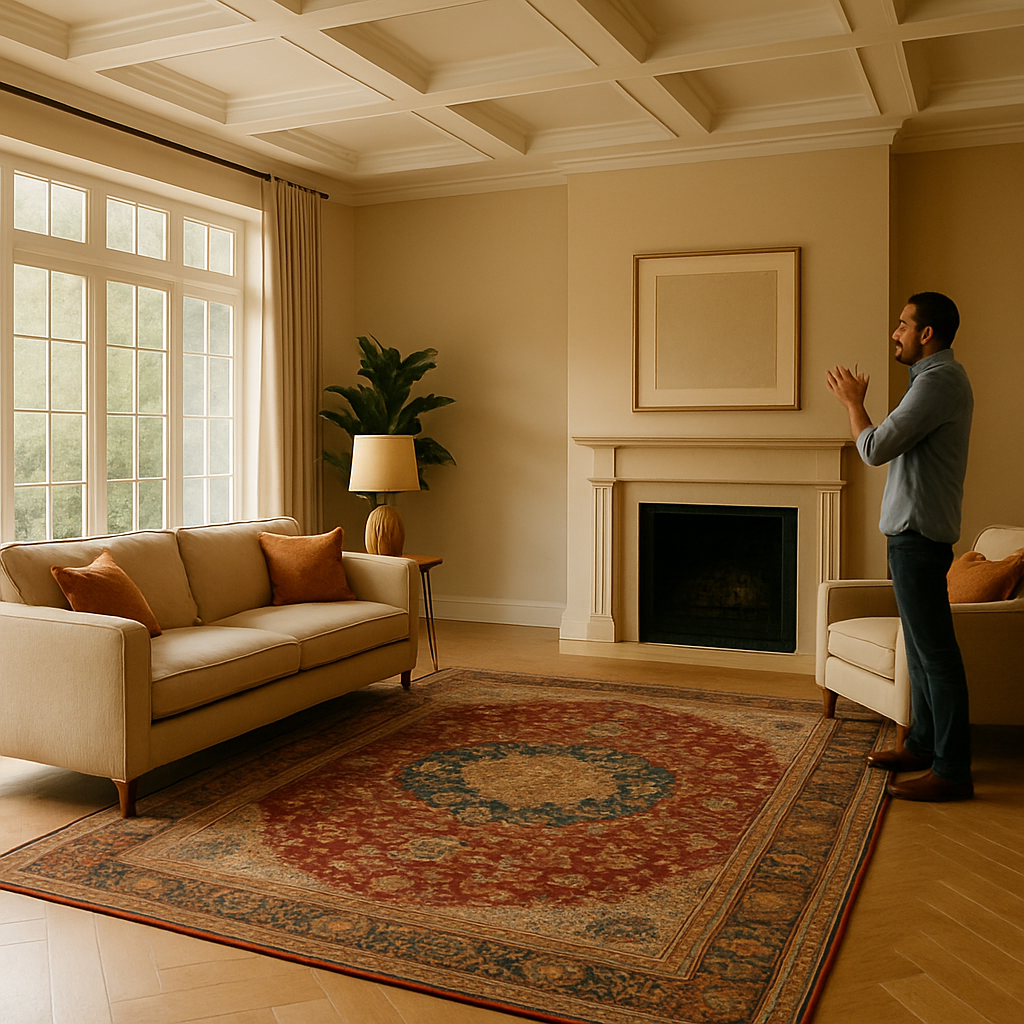Large rooms may feel grand and spacious, but they often come with one big drawback: poor acoustics. Echoes, harsh sound reflections, and hollow noises can quickly make these beautiful spaces feel cold and uninviting. That’s where rugs come in.
At Persian Rug Gallery, we often work with clients looking to improve both the style and functionality of their large interiors. Rugs are one of the most effective and aesthetically pleasing ways to enhance room acoustics—no construction required. Here’s how they work and why they’re a must-have for any expansive space.
Why Acoustics Suffer in Large Rooms
In rooms with high ceilings, hardwood floors, and wide-open layouts, sound tends to bounce. When surfaces like walls, floors, and ceilings are all hard and flat, sound waves reflect endlessly, creating reverberation and echo. This can make conversations hard to follow, music sound tinny, and movies feel hollow.
Soft surfaces absorb sound instead of reflecting it. That’s where rugs become acoustic game-changers.
1. Rugs Absorb Echoes and Reduce Reverb
Rugs act as sound absorbers. They break up sound waves before they bounce off the floor, reducing echo and reverberation. Thick, plush rugs are especially effective in softening acoustics. This is crucial in living rooms, open-plan kitchens, and home offices where clarity matters.
2. Placement Matters: Rugs in the Right Zones
Strategic rug placement maximizes their acoustic benefit. Here are key zones to focus on:
- Under Seating Areas: In living rooms or lounges, placing a rug beneath the furniture grouping absorbs voices and footstep noise.
- Under Dining Tables: Helps muffle chair movements and conversations.
- Hallways or Open Walkways: Runners soften steps and reduce sound bouncing down corridors.
Using multiple rugs in a single room can divide and soften acoustics throughout the space.
3. Layering for Better Sound Absorption
Layering rugs isn’t just a style move—it adds acoustic depth. A base rug combined with a smaller, softer top rug creates more material to absorb sound. Use a dense rug pad beneath both layers to boost comfort and cut noise further.
4. Rug Materials That Improve Acoustics
Not all rugs perform equally when it comes to sound. Choose materials known for their density and softness:
- Wool: Naturally dense, durable, and highly effective at sound absorption.
- Shag: Long fibers trap sound waves and reduce sharp echoes.
- Cotton: Softer and quieter than synthetic options, especially in flatweaves.
- Natural Fibers (Jute/Sisal): While more textured, they add sound dampening in walkways and under furniture.
Avoid thin, slick synthetic rugs if your main goal is acoustic improvement.
5. Rugs Enhance More Than Just Sound
Improved acoustics are just one benefit. Rugs also add warmth, define space, and visually soften expansive rooms. They bring balance, coziness, and texture—helping large rooms feel more intimate without sacrificing scale.
Meta Description:
Discover how rugs influence acoustics in large rooms by reducing echo, improving sound clarity, and adding warmth through strategic placement and material choices.
Explore More
- External Link: Understanding Echoes – Tips for Enhancing Room Acoustics
- Internal Link: Rug Layering Tricks Designers Use All the Time
📍 Persian Rug Gallery
51 Springoro Pike, Miamisburg, OH 45342
📧 buyprg@yahoo.com
📞 (937) 436-3655
🌐 Visit Our Website



